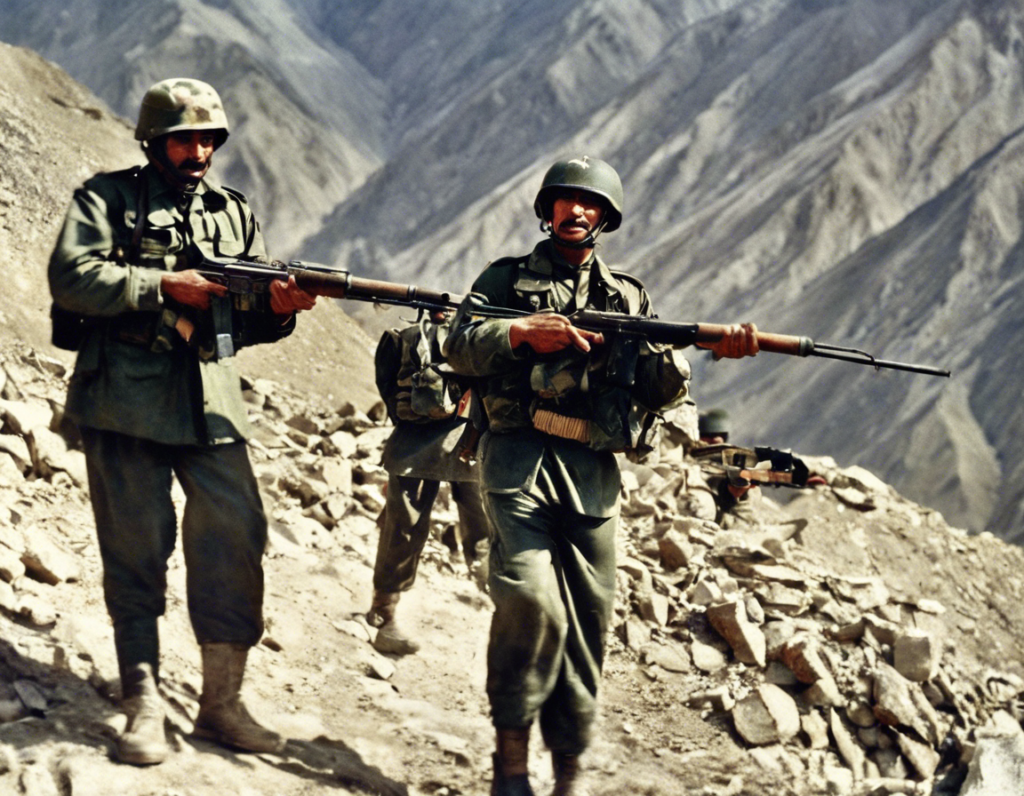The Kargil War of 1999 between India and Pakistan remains a significant chapter in the history of both countries. This conflict, also known as the Kargil conflict, took place in the Kargil district of Jammu and Kashmir, primarily along the Line of Control (LoC). The war lasted for over two months and resulted in numerous casualties on both sides. To understand the intricacies of this conflict and its implications, it is essential to delve into its history in detail.
Background of the Conflict
The roots of the Kargil War can be traced back to the first Indo-Pakistani war in 1947-48, which led to the creation of the Line of Control separating Indian-administered Kashmir from Pakistan-administered Kashmir. Tensions between the two countries persisted over the decades, with several subsequent wars and ongoing territorial disputes.
Events Leading to the War
In early 1999, the Indian Army discovered the presence of Pakistani soldiers and militants who had infiltrated into the Indian side of the LoC in the Kargil sector. This infiltration was a strategic move by Pakistan to seize control of key locations in the region. The conflict escalated when the Indian armed forces launched Operation Vijay on May 26, 1999, to evict the infiltrators from the region.
Military Strategies and Operations
The Kargil War saw both sides engaged in intense fighting at high altitudes, making it a challenging terrain for military operations. The Indian Army faced numerous difficulties due to the rugged mountainous terrain and the well-entrenched positions of the infiltrators. However, with strategic planning, air support, and ground offensives, the Indian forces were able to regain control of the majority of the infiltrated positions.
International Response and Diplomatic Efforts
The Kargil War garnered international attention, with several countries urging both India and Pakistan to exercise restraint and resolve the conflict through dialogue. The United States played a significant role in mediating talks between the two nations, leading to a ceasefire agreement in July 1999. The Lahore Declaration, signed in February 1999, was an attempt to improve bilateral relations, but the Kargil conflict derailed these efforts.
Casualties and Aftermath
The Kargil War resulted in heavy casualties on both sides, with estimates suggesting thousands of soldiers and militants lost their lives during the conflict. The war also had political repercussions, with the Pakistani Prime Minister facing criticism for the incursion into Indian territory. In India, the conflict strengthened national unity and resolve against external aggression.
Legacy of the Kargil War
The Kargil War left a lasting impact on Indo-Pakistani relations and the security dynamics of the region. It underscored the importance of vigilance along the LoC and highlighted the need for diplomatic efforts to prevent such conflicts in the future. The war also led to a reassessment of military strategies and preparedness by both countries.
Key Takeaways
- The Kargil War of 1999 was a high-altitude conflict between India and Pakistan in the Kargil district of Jammu and Kashmir.
- The conflict was sparked by the infiltration of Pakistani soldiers and militants into Indian territory along the Line of Control.
- The Indian armed forces launched Operation Vijay to evict the infiltrators, leading to intense fighting in the region.
- International intervention and diplomatic efforts played a crucial role in resolving the conflict, leading to a ceasefire in July 1999.
- The Kargil War had significant casualties on both sides and left a lasting impact on the security dynamics of the region.
FAQs
-
What were the main causes of the Kargil War?
The Kargil War was primarily caused by the infiltration of Pakistani soldiers and militants into Indian territory along the Line of Control. -
How long did the Kargil War last?
The conflict lasted for over two months, from May to July 1999. -
What role did international diplomacy play in resolving the Kargil conflict?
International intervention and diplomatic efforts helped mediate talks between India and Pakistan, leading to a ceasefire agreement in July 1999. -
What were the key military strategies employed during the Kargil War?
The Indian armed forces utilized air support, ground offensives, and strategic planning to evict the infiltrators from the region. -
What was the political impact of the Kargil War in India and Pakistan?
The war had political repercussions in both countries, with the Pakistani Prime Minister facing criticism for the incursion, while in India, it strengthened national unity against external aggression.
In conclusion, the Kargil War of 1999 remains a significant milestone in the history of India and Pakistan, highlighting the complexities of the Indo-Pakistani relationship and the challenges of border disputes in the region. The conflict serves as a reminder of the importance of diplomatic resolutions to prevent escalation and promote peace in the region.
